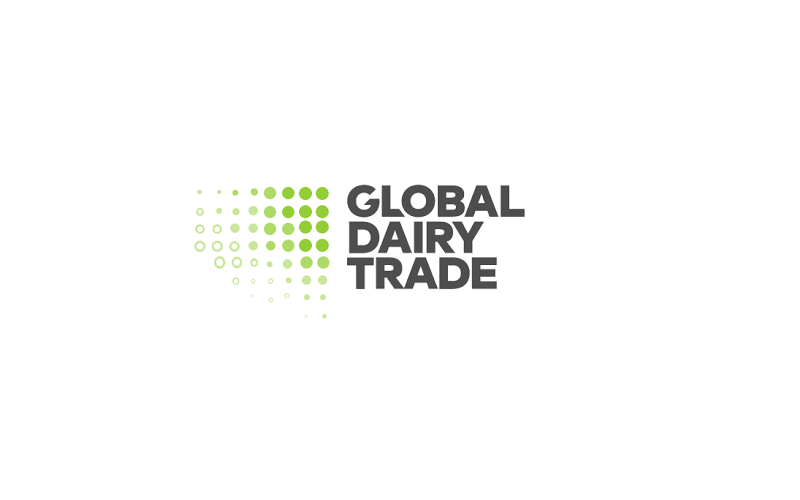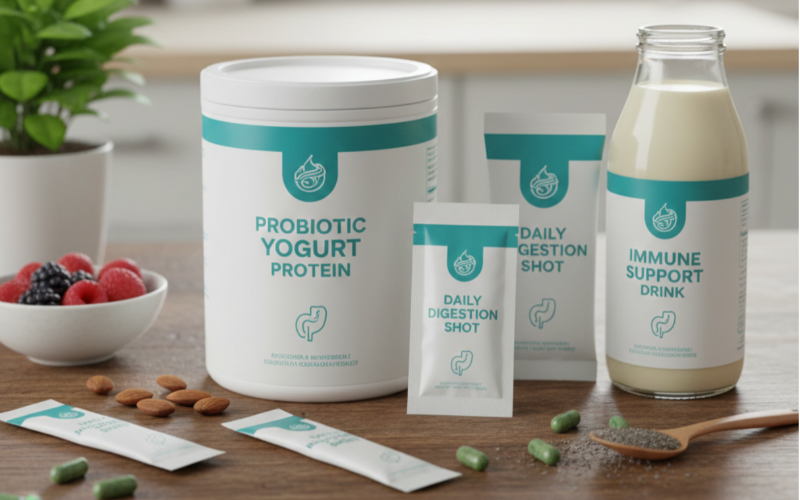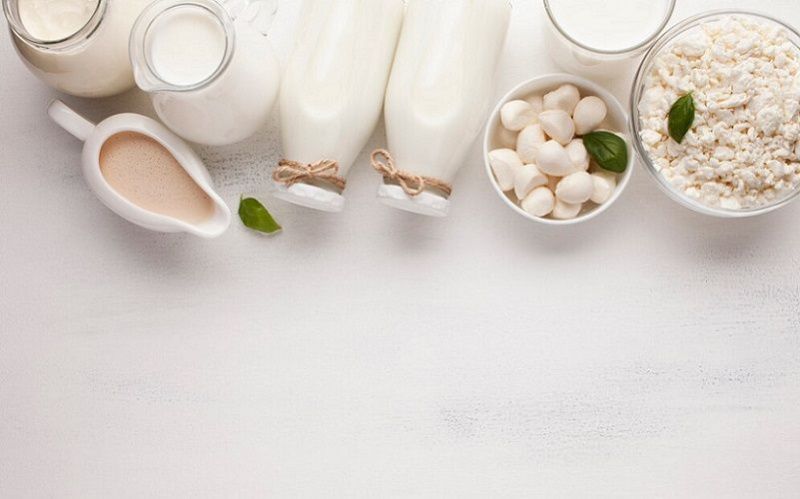China: Raw Milk Prices Turn Negative
Source: The DairyNews
The continuous decline in raw milk prices is significantly impacting dairy companies and the industry, attracting widespread attention.

On July 3rd, the 15th China Dairy Conference, hosted by the China Dairy Association, was held in Wuhan. At the conference, Li Shengli, Chief Scientist of the National Dairy Industry Technology System and Vice President of the China Dairy Association, revealed that the surplus of raw milk in 2024 is more severe than in 2023. The continuous decline in raw milk purchase prices has led to the first recorded inversion of milk prices and costs in the national dairy system.
According to Li, by May this year, the monitored milk price had dropped to 3.34 yuan per kilogram, and for the first time, the profit per kilogram of milk turned negative, with the industry’s loss rate exceeding 80%. Against this backdrop, promoting dairy consumption has become a consensus within the industry.
"The Dairy Industry Faces Its Biggest Challenge Since 2008"
According to the May 2024 fresh agricultural product supply and demand monthly report by the Ministry of Agriculture and Rural Affairs, domestic raw milk purchase prices have been declining year-on-year for 27 consecutive months, the longest duration since 2010.
At the conference, Yu Kangzhen, a State Council consultant and former Deputy Minister of Agriculture and Rural Affairs, stated that the current dairy industry in China faces its biggest challenge since 2008. This includes a weak dairy consumption market, the growth rate of dairy product consumption being far slower than that of raw milk, and an oversupply of raw milk.
In fact, the oversupply of raw milk became apparent as early as 2023. Data from the National Bureau of Statistics shows that in 2023, the national production of fresh milk (raw milk) was 41.97 million tons, an increase of 6.7% year-on-year. Additional data indicates that the top 40 farming groups had 2.8 million dairy cows in stock in 2023, a 25% increase from 2021, with the expansion of group farms occurring rapidly.
While production capacity continues to increase, raw milk prices have been continuously declining. Data from the Ministry of Agriculture and Rural Affairs shows that in major producing provinces such as Inner Mongolia and Hebei, the average price of fresh milk (raw milk) dropped from 4.12 yuan per kilogram in the first week of January 2023 to 3.66 yuan per kilogram in the fourth week of December 2023, a cumulative decline of 11.16%.
This overcapacity is accompanied by insufficient consumer demand. According to Yu Kangzhen, in 2023, China's per capita dairy consumption was 42.4 kilograms, only one-third of the world average. Li Shengli also believes that one of the reasons for this dairy cycle is the current decline in the growth rate of dairy product consumption.
Kantar Consumer Index shows that due to adjustments in consumer demand and the impact of the pandemic, liquid milk sales have shown a declining trend in recent years. Specifically, during the pandemic from 2020 to 2022, the average growth rate of liquid milk consumption at home was 0.7%, but it dropped to -1.5% in 2023, indicating that consumer demand for liquid milk has not yet returned to pre-pandemic levels.
The continuous decline in raw milk prices has severely impacted the performance of production companies. According to a reporter from Southern Metropolis Daily’s Bay Finance, the net profits of many raw milk dairy companies in 2023 have mostly declined or even turned into losses.
For instance, Modern Dairy achieved a revenue of 13.458 billion yuan in 2023, a year-on-year increase of 9.5%; however, its net profit for the year was 185 million yuan, a 68.1% decline year-on-year. Notably, the gross profit of its raw milk business was 2.913 billion yuan, a year-on-year decrease of 5.9%; the gross profit margin dropped by 2.7 percentage points to 28.4%. In its financial report, Modern Dairy explained that the decline in gross profit margin was mainly due to the inability of the gross profit from increased raw milk sales volume to fully offset the decrease in gross profit caused by the decline in the average selling price of raw milk.
Similarly, AustAsia Group also faced severe losses. According to its annual report, AustAsia Group recorded revenue of approximately 3.924 billion yuan in 2023, a slight increase of 3.2% compared to 2022; however, its net loss for 2023 was approximately 489 million yuan, turning from profit to loss year-on-year.
AustAsia's losses also affected its parent company. In April this year, Japan’s Meiji Holdings announced a downward revision of its profit forecast. Meiji attributed this to an impairment loss of approximately 14.3 billion yen (about 675 million yuan) in non-current assets related to its Chinese subsidiaries' milk and yogurt businesses, which it attributed to the performance losses of AustAsia farms last year.
Another raw milk producer, Western Pasture, reported a total revenue of 1.123 billion yuan in 2023, a year-on-year decrease of 15.22%; its net profit attributable to the parent company turned from profit to a loss of 64.2457 million yuan year-on-year.
The continuous decline in raw milk prices and the heavy burden on enterprises make promoting dairy consumption imperative. Since the beginning of this year, the state has introduced various policies to promote dairy consumption. The recent Central No. 1 Document proposed improving liquid milk standards, standardizing reconstituted milk labeling, and promoting fresh milk consumption.
Recently, five departments, including the National Development and Reform Commission, the Ministry of Agriculture and Rural Affairs, the Ministry of Commerce, the Ministry of Culture and Tourism, and the State Administration for Market Regulation, jointly issued measures to create new consumption scenes and cultivate new growth points. These measures particularly mentioned promoting the formulation of relevant standards for the dairy industry and encouraging the use of fresh milk to produce liquid milk.
According to Li, by May this year, the monitored milk price had dropped to 3.34 yuan per kilogram, and for the first time, the profit per kilogram of milk turned negative, with the industry’s loss rate exceeding 80%. Against this backdrop, promoting dairy consumption has become a consensus within the industry.
"The Dairy Industry Faces Its Biggest Challenge Since 2008"
According to the May 2024 fresh agricultural product supply and demand monthly report by the Ministry of Agriculture and Rural Affairs, domestic raw milk purchase prices have been declining year-on-year for 27 consecutive months, the longest duration since 2010.
At the conference, Yu Kangzhen, a State Council consultant and former Deputy Minister of Agriculture and Rural Affairs, stated that the current dairy industry in China faces its biggest challenge since 2008. This includes a weak dairy consumption market, the growth rate of dairy product consumption being far slower than that of raw milk, and an oversupply of raw milk.
In fact, the oversupply of raw milk became apparent as early as 2023. Data from the National Bureau of Statistics shows that in 2023, the national production of fresh milk (raw milk) was 41.97 million tons, an increase of 6.7% year-on-year. Additional data indicates that the top 40 farming groups had 2.8 million dairy cows in stock in 2023, a 25% increase from 2021, with the expansion of group farms occurring rapidly.
While production capacity continues to increase, raw milk prices have been continuously declining. Data from the Ministry of Agriculture and Rural Affairs shows that in major producing provinces such as Inner Mongolia and Hebei, the average price of fresh milk (raw milk) dropped from 4.12 yuan per kilogram in the first week of January 2023 to 3.66 yuan per kilogram in the fourth week of December 2023, a cumulative decline of 11.16%.
This overcapacity is accompanied by insufficient consumer demand. According to Yu Kangzhen, in 2023, China's per capita dairy consumption was 42.4 kilograms, only one-third of the world average. Li Shengli also believes that one of the reasons for this dairy cycle is the current decline in the growth rate of dairy product consumption.
Kantar Consumer Index shows that due to adjustments in consumer demand and the impact of the pandemic, liquid milk sales have shown a declining trend in recent years. Specifically, during the pandemic from 2020 to 2022, the average growth rate of liquid milk consumption at home was 0.7%, but it dropped to -1.5% in 2023, indicating that consumer demand for liquid milk has not yet returned to pre-pandemic levels.
The continuous decline in raw milk prices has severely impacted the performance of production companies. According to a reporter from Southern Metropolis Daily’s Bay Finance, the net profits of many raw milk dairy companies in 2023 have mostly declined or even turned into losses.
For instance, Modern Dairy achieved a revenue of 13.458 billion yuan in 2023, a year-on-year increase of 9.5%; however, its net profit for the year was 185 million yuan, a 68.1% decline year-on-year. Notably, the gross profit of its raw milk business was 2.913 billion yuan, a year-on-year decrease of 5.9%; the gross profit margin dropped by 2.7 percentage points to 28.4%. In its financial report, Modern Dairy explained that the decline in gross profit margin was mainly due to the inability of the gross profit from increased raw milk sales volume to fully offset the decrease in gross profit caused by the decline in the average selling price of raw milk.
Similarly, AustAsia Group also faced severe losses. According to its annual report, AustAsia Group recorded revenue of approximately 3.924 billion yuan in 2023, a slight increase of 3.2% compared to 2022; however, its net loss for 2023 was approximately 489 million yuan, turning from profit to loss year-on-year.
AustAsia's losses also affected its parent company. In April this year, Japan’s Meiji Holdings announced a downward revision of its profit forecast. Meiji attributed this to an impairment loss of approximately 14.3 billion yen (about 675 million yuan) in non-current assets related to its Chinese subsidiaries' milk and yogurt businesses, which it attributed to the performance losses of AustAsia farms last year.
Another raw milk producer, Western Pasture, reported a total revenue of 1.123 billion yuan in 2023, a year-on-year decrease of 15.22%; its net profit attributable to the parent company turned from profit to a loss of 64.2457 million yuan year-on-year.
The continuous decline in raw milk prices and the heavy burden on enterprises make promoting dairy consumption imperative. Since the beginning of this year, the state has introduced various policies to promote dairy consumption. The recent Central No. 1 Document proposed improving liquid milk standards, standardizing reconstituted milk labeling, and promoting fresh milk consumption.
Recently, five departments, including the National Development and Reform Commission, the Ministry of Agriculture and Rural Affairs, the Ministry of Commerce, the Ministry of Culture and Tourism, and the State Administration for Market Regulation, jointly issued measures to create new consumption scenes and cultivate new growth points. These measures particularly mentioned promoting the formulation of relevant standards for the dairy industry and encouraging the use of fresh milk to produce liquid milk.











